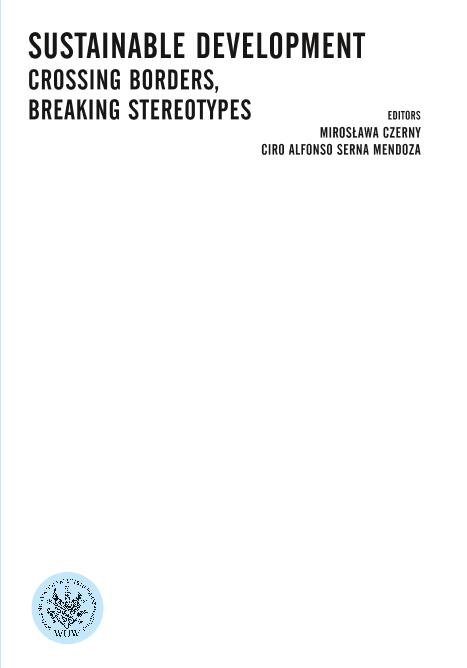Mostrar el registro sencillo del ítem
dc.contributor.author
Buzai, Gustavo Daniel

dc.contributor.author
Baxendale, Claudia Alicia

dc.contributor.author
Montes Galbán, Eloy José

dc.contributor.other
Czerny, Miroslawa
dc.contributor.other
Cerna Mendoza, Siro
dc.date.available
2023-03-13T14:26:25Z
dc.date.issued
2021
dc.identifier.citation
Buzai, Gustavo Daniel; Baxendale, Claudia Alicia; Montes Galbán, Eloy José; Megacity Buenos Aires and its most recent conurbation impact; Wydawnictwa Uniwersytetu Warszawskiego; 2021; 101-113
dc.identifier.isbn
978-83-235-4886-7
dc.identifier.uri
http://hdl.handle.net/11336/190315
dc.description.abstract
Some three decades of work have allowed us to analyze the spatial trends of the Buenos Aires agglomeration in order to defi ne its shape and distinctive phases of expansion as indicators of the economic and socio-demographic history of Argentina. We consider urban geometry a spatial manifestation of multiple processes; its modelling was carried out from census data, from 1869 to 2001. In this lapse of time it is possible to defi ne distinct periods: Argentina as agro-exporter (1869–1914); initial industrial development of consumer goods (1914–1947); development of base industries based on international capital (1947–1970); de-industrialization processes and fi nancial modifi cations (1970–1991); deepening of neoliberal policies, convertibility and crisis (1991–2001); and the turn to the nationalist and populist left (2001–2015). The presentation focuses on the latest expansion of the Buenos Aires agglomeration, a conurbation process which integrates intermediate-sized cities of contiguous municipalities. The expansion process developed along fi ve axes that incorporate different cities of the metropolitan region to the urban area at a median distance from the main center (the CBD, Central Business District) of 61 km. The development of the grey infrastructure, as an urban continuum, made it possible to capture its current confi guration via the analysis of night-time satellite images. Based on this structure, the megacity Buenos Aires exceeds approximately 15 million inhabitants in an urban area of some 4,000 km2 , consolidating itself as the third largest metropolitan area in Latin America.
dc.format
application/pdf
dc.language.iso
eng
dc.publisher
Wydawnictwa Uniwersytetu Warszawskiego
dc.rights
info:eu-repo/semantics/openAccess
dc.rights.uri
https://creativecommons.org/licenses/by/2.5/ar/
dc.subject
Megacity
dc.subject
Urban Models
dc.subject
Urban Geography
dc.subject
Buenos Aires
dc.subject.classification
Estudios Urbanos

dc.subject.classification
Geografía Económica y Social

dc.subject.classification
CIENCIAS SOCIALES

dc.title
Megacity Buenos Aires and its most recent conurbation impact
dc.type
info:eu-repo/semantics/publishedVersion
dc.type
info:eu-repo/semantics/bookPart
dc.type
info:ar-repo/semantics/parte de libro
dc.date.updated
2023-03-06T16:20:36Z
dc.journal.pagination
101-113
dc.journal.pais
Polonia

dc.journal.ciudad
Varsovia
dc.description.fil
Fil: Buzai, Gustavo Daniel. Consejo Nacional de Investigaciones Científicas y Técnicas; Argentina. Universidad Nacional de Luján; Argentina
dc.description.fil
Fil: Baxendale, Claudia Alicia. Universidad Nacional de Luján; Argentina
dc.description.fil
Fil: Montes Galbán, Eloy José. Universidad Nacional de Luján; Argentina. Consejo Nacional de Investigaciones Científicas y Técnicas; Argentina
dc.relation.alternativeid
info:eu-repo/semantics/altIdentifier/url/https://www.wuw.pl/product-eng-15421-Sustainable-development-Crossing-borders-breaking-stereotypes-EBOOK.html
dc.relation.alternativeid
info:eu-repo/semantics/altIdentifier/doi/https://doi.org/10.31338/uw.9788323548867
dc.conicet.paginas
430
dc.source.titulo
Sustainable Development: Crossing Borders, Breaking Stereotypes
Archivos asociados
